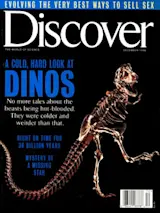April may be the cruelest month, but December certainly is the darkest--the darkest, in fact, for everyone north of the equator. On December 21, at 9:05 a.m. eastern time, Earth’s northern axis points farthest away from the sun, and the sun’s path across our sky is its lowest of the year. That occasion is the winter solstice.
You’d think the solstice would hold few surprises. Think again. When the media announce that December 21 has the longest night, people generally expect to get their earliest sunset or latest sunrise, or both. They get neither: the earliest sunset happens half a month before the solstice, and the latest sunrise doesn’t occur until January. At the solstice, it’s merely the sun’s low position that makes for our shortest day.
Another myth is that the solstice brings a kind of permanent night to everyone north of the Arctic Circle’s latitude of 66.5 degrees. ...














